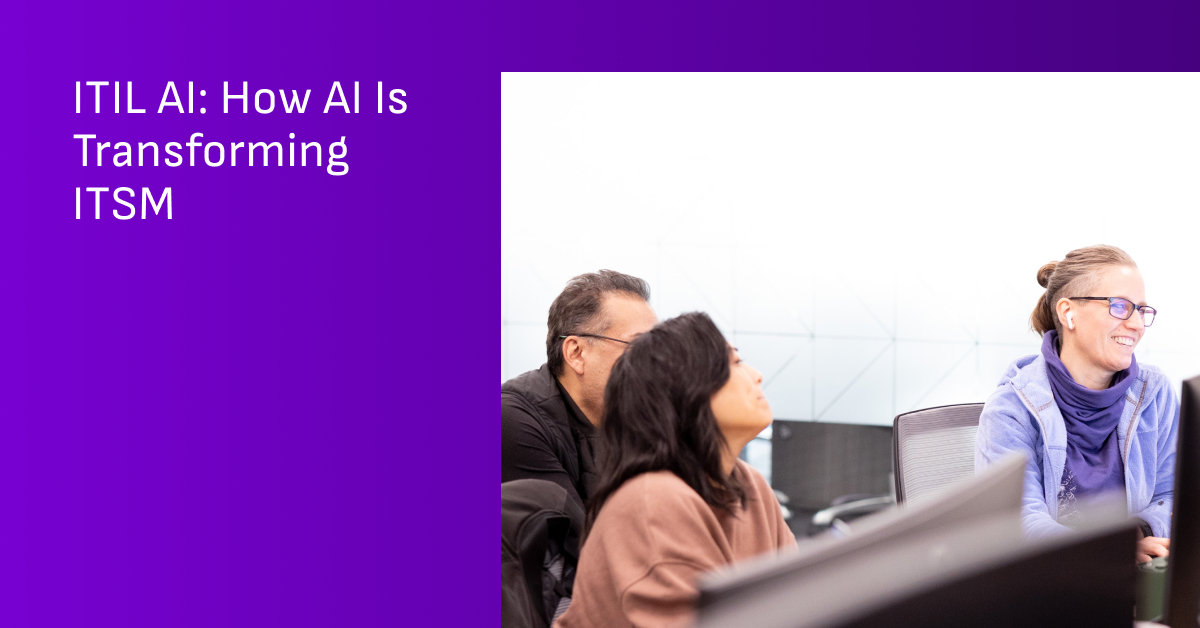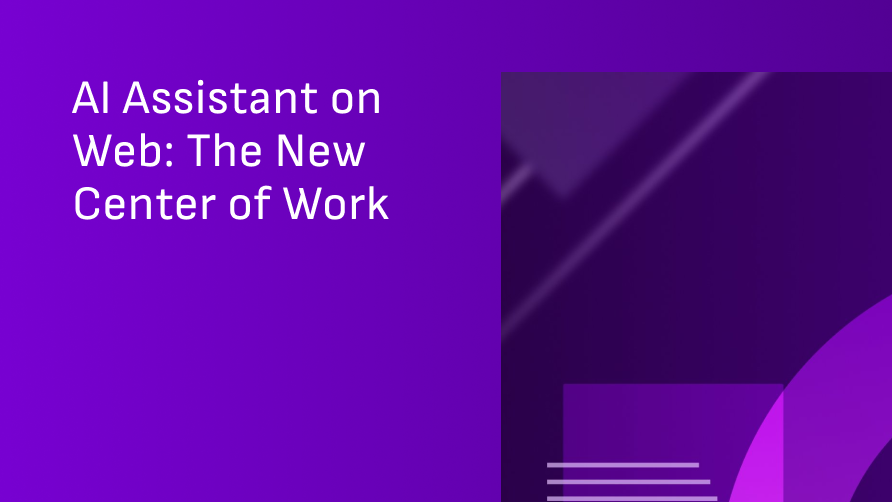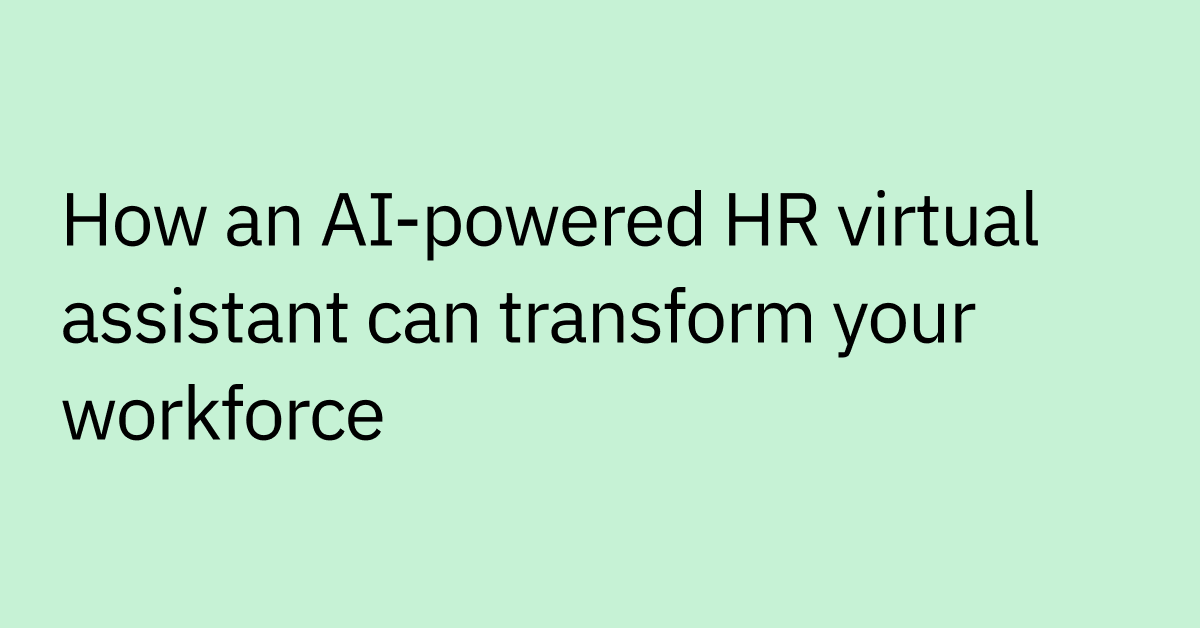Does it feel like your IT teams struggle to catch up with their daily workloads?
Maybe they're putting out fires or dealing with the same repetitive issues — leaving little time for more strategic work. That cycle can be hard to break and puts additional strain on both IT resources and broader business operations.
You're not alone. Even teams following IT service management (ITSM) best practices and core ITIL principles find themselves trapped in inefficient cycles. In fact, 58% of IT teams spend 5 to 20 hours a week just dealing with repetitive tasks.
But there is a better way. By integrating artificial intelligence (AI) into your ITIL framework, you can:
- Automate routine work
- Accelerate service delivery
- Free up your teams to focus on higher-impact initiative
But before exploring how AI fits into the picture, let’s quickly revisit what ITIL is and why it matters for modern ITSM.
What is ITIL, and why does it matter for modern ITSM?
The Information Technology Infrastructure Library (ITIL) is a globally recognized collection of ITSM best practices, first developed by the U.K. government in the 1980s. Since then, it's helped countless organizations establish consistent, efficient, and reliable IT service delivery.
When your organization relies heavily on technology — whether it's enhancing customer experiences, improving your workflows, or adding automation — having clearly defined IT processes to support these efforts is critical.
This is essentially what ITIL does. It gives your teams a structured roadmap for setting up IT processes so your technology investments consistently align with and support your business goals.
Introducing ITIL 4 and the Service Value System (SVS)
ITIL has evolved significantly since its inception.
ITIL 4 is the most recent version of this framework, which centers around a modernized approach called the Service Value System (SVS). This SVS captures how different elements and activities within your organization work together as a connected system to create value.
Seven guiding principles make up ITIL 4’s SVS and guide you in how to approach all your IT service management activities. These include:
- Focus on value.
- Start where you are.
- Progress iteratively with feedback.
- Collaborate and promote visibility.
- Think and work holistically.
- Keep it simple and practical.
- Optimize and automate.
From lifecycle to Service Value Chain
Previous versions of ITIL (like ITIL v3) provided a structured approach to IT service management by using a five-stage service lifecycle:
- Strategy
- Design
- Transition
- Operation
- Continuous improvement
The ITIL 4 framework replaces this with a more dynamic and interconnected Service Value Chain (SVC), designed for modern, agile IT environments.
The key activities of this chain include:
- Plan and improve
- Engage
- Design and transition
- Obtain/build
- Deliver and support
The role of ITIL in scaling and standardizing IT services
ITIL provides businesses with structured processes essential for scaling IT operations smoothly. As your company grows, standardized governance policies and operating procedures become critical for ensuring consistency, efficiency, and reliability across your IT teams.
However, businesses scaling their IT often mistakenly assume that introducing AI-driven automation alone can resolve operational challenges and ensure consistent service quality.
In reality, automation’s effectiveness depends heavily on the foundational ITIL framework already in place. Without clearly defined processes, AI tools won't deliver the expected improvements in efficiency or standardization.
This is precisely why understanding how ITIL and AI complement each other is crucial to your success.
What does “ITIL AI” actually mean today?
ITIL AI combines the structured effectiveness of the ITIL framework with the power of intelligent automation. Simply put, it helps your business handle ITSM workloads more quickly and efficiently — without compromising on service delivery quality or reliability.
How AI enhances ITIL without replacing it
AI isn’t designed to be a "replacement," for ITIL but it has the potential to significantly improve the framework's effectiveness for your business. With AI you can:
- Automate repetitive tasks like ticket logging, prioritization,
- Automate responses to inquiries, and incident routing.
- Rapidly analyze large volumes of data to generate actionable insights for continuous service improvement.
Types of AI used in ITSM (and why they matter)
When we talk about incorporating AI into ITSM processes, there's more than one way to do it.
Businesses can use various types of AI technologies to improve IT service management, each with its unique capabilities and benefits.
- Conversational AI is commonly used in chatbots and virtual assistants, and it allows users to interact with IT systems using natural language. This enables businesses to offer automated 24/7 support to employees or customers and frees up service desks from repetitive tier-1 requests.
- Machine learning (ML) enables self-learning applications and services across connected systems and databases. It can find hidden patterns and insights within IT data without explicit programming, making it useful for predicting potential IT incidents, intelligently routing support tickets, assisting with root cause analysis, and forecasting IT capacity needs.
- Generative AI can automatically generate answers or even create new content based on AI learning models. It's useful for summarizing IT knowledge base articles, sending real-time communications about system outages, and assisting development teams with code creation or editing for CI/CD tasks.
- Agentic AI is capable of taking independent action, making decisions, and executing them across multiple systems. Using an agentic AI for IT support through a conversational interface or AI assistant lets employees complete complex tasks (like resetting passwords, checking ticket status, or requesting access) through natural language conversations enabling smoother, ITIL-aligned service processes.
Why ITIL alone isn’t enough in 2025
You've probably already noticed that the types of issues your IT teams are dealing with take a lot more time and effort to resolve than they used to. Modern services and applications rely on complicated infrastructures that often cover multiple cloud and on-premise environments.
Managing this increasing complexity primarily through manual ITIL processes requires more time and resources than ever, highlighting the growing importance of leveraging AI within your ITIL framework. ITIL AI can give you the automation and efficiency you need to handle these modern challenges effectively.
Real-world applications of AI in core ITIL practices
As AI adoption accelerates across enterprise IT, organizations are finding practical ways to embed intelligent automation into their ITIL frameworks.
The result: faster support, more consistent processes, and a better experience for both IT teams and employees. Here are key examples of how AI is already transforming core ITSM practices.
Incident management
AI has the ability to dramatically enhance incident monitoring and detection by analyzing system behavior continuously — 24/7 system analysis.
When implemented with access to the right data sources and event signals, it can proactively surface anomalies faster than manual checks or user-reported issues.
Beyond detection, AI-driven ITSM solutions use natural language processing (NLP) to triage incoming tickets. They’re able to analyze the context and intent of user requests to accurately categorize issues based on urgency, impact, and type — helping IT teams prioritize and route incidents automatically.
In more advanced setups, AI can also trigger automated responses—like service restarts or alert escalations — helping teams resolve incidents faster and reduce employee disruption.
Problem management
Recurring issues can drain your IT team and consume valuable time. AI can help reduce this burden by analyzing large volumes of IT data — from incident records and device logs to monitoring tools and configuration databases — to find hidden patterns that reveal root causes.
By continuously learning from both real-time data and historical incidents, AI systems can identify trends that may not be immediately obvious to human analysts — for example, performance issues tied to a specific software version or hardware model.
These tools can automatically cluster related incidents and flag them as part of a larger underlying issue, supporting faster identification of problems and more efficient remediation.
While human validation remains critical, AI accelerates the diagnostic process and provides actionable insights that help IT teams address root causes, reduce ticket volume, and prevent future disruptions.
Change enablement
Assessing and managing organizational risk is a key part of IT change management. But not all changes require the same level of internal team focus. AI can help streamline this process by automatically handling routine, low-risk changes such as user provisioning, software updates, or system patching.
By analyzing historical change success rates, infrastructure dependencies, and CMDB data, AI systems can assess the potential risk of a given change. When indicators suggest a higher risk—such as past failures with similar updates or potential service disruptions — AI can flag those changes for manual review by your IT team.
This intelligent prioritization allows you to focus your experts where they're most needed, reducing the likelihood of incidents while accelerating approvals for straightforward requests.
In some cases, AI can also assist with post-change validation, monitoring system behavior to confirm whether a change has been successfully implemented or if further action is required.
Ultimately, AI enables a more efficient, risk-aware change process—minimizing delays for employees and reducing operational disruptions.
Service desk optimization
By leveraging AI-driven ITSM, you can intelligently route incoming tickets to the appropriate agent or team based on factors like availability, skillset, or issue complexity. This can lead to faster and more accurate resolutions for users, fewer misroutes, and better SLA adherence.
AI can also detect urgency and sentiment behind support tickets or self-service chatbot conversations. Using NLP and machine learning, AI analyzes dialogues, identifying points of frustration, urgency, or helpful customer feedback that you can use to appropriately escalate issues and continuously improve your services over time.
Multilingual NLP also ensures global teams can request help in their preferred language without added friction. The result: faster, more personalized support that scales with your organization.
Knowledge management
Generative AI can help IT teams scale knowledge creation by drafting detailed troubleshooting guides and help articles based on patterns in past support tickets. This enables you to generate articles quickly, which then your team is able to review and greatly reduce the time spent writing content from scratch.
AI can also identify outdated or underperforming documentation by analyzing usage trends and unresolved tickets, flagging content that may need updating. In dynamic environments with both legacy and new systems, this helps ensure resources stay relevant.
Continual improvement
AI-driven ITSM tools support continual improvement by analyzing trends across tickets, resolution times, escalation rates, and user feedback. These systems surface patterns and performance gaps that may indicate inefficient processes or underperforming areas within your ITIL framework.
While AI can remedidate certain straightforward issues such as connectivity problems or device setup, for dynamic and advanced challenges AI highlights opportunities for improvement — such as frequently repeated issues, delayed resolutions, or low self-service success rates — so IT teams can prioritize changes based on impact.
These insights are often delivered through dashboards or reports and can inform updates to workflows, automation rules, or documentation.
When paired with human oversight and regular feedback loops, AI helps teams implement changes faster and measure their impact over time.
Key benefits of integrating AI into your ITIL strategy
So, what does ITIL AI mean in terms of tangible business benefits? Here’s what you can expect when you strategically integrate AI-driven processes into your ITIL workflows.
Faster, more scalable service delivery
AI can significantly increases the speed of your core ITSM processes, such as incident triage, ticket management, and change approvals. By automating these workflows, you reduce manual effort, improve consistency, and scale support across teams, tools, and geographies — without sacrificing service quality.
Lower operational costs and optimized resource allocation
With automation handling repetitive tier-1 tasks, IT teams spend less time on manual tasksand more time on high-value work. This operational efficiency can reduce the need to scale headcount as your business grows, while improving overall team productivity.
Better employee and end-user experience
Instead of relying on certain departments like IT and HR for support, you can leverage AI-driven ITSM to enable employee self-service to resolve common issues on their own — instantly, and at any time.
With the right AI tools, you gain the ability to resolve issues faster, with fewer handoffs, and a more intuitive and user-friendly support experience that contributes to higher satisfaction, less downtime, and more efficient employees.
What to consider before implementing AI in ITIL workflows
Before you implement AI in your ITIL workflows, it's important to remember that AI integrations aren't always straightforward, especially when applied to complex IT environments.
Here are some critical factors to consider before getting started:
Data quality and infrastructure readiness
To get maximum value from your AI-driven ITIL workflow, you'll want to validate your data integrity. Before implementation, strive to make your data from ticketing systems, knowledge bases, CMDBs, and monitoring tools cleanly structured and updated.
Confirm that any AI tools lets you can seamlessly connect these data sources to ensure you're relying on up-to-date information and that your infrastructure can handl any planned AI integrations.
Change management and executive buy-in
The success of your improved ITIL workflows depends not just on new technology but also on your people and processes being ready for the shift.
Address potential resistance to operational changes by aligning early with key stakeholders and clearly communicating their benefits to your teams. This includes securing executive buy-in and support to ensure a successful AI technology rollout.
Security, compliance, and governance
AI systems should comply with internal and external policies around data usage, auditability, and privacy. Make sure your chosen tools offer visibility into how decisions are made, maintain a clear audit trail, and can be configured to meet the necessary regulatory standards.
Vendor selection and integration capabilities
When making strategic improvements to your ITIL workflows, it's essential to choose the right AI partner. Look for vendors with a strong understanding of ITSM principles.
Out-of-the-box ready platforms with extensive integrations like Moveworks are ideal for this type of partnership. These platforms are able to seamlessly integrate with your existing ITSM infrastructure, allowing you to automate and improve your ITIL frameworks without unnecessary friction or heavy lifting.
How Moveworks helps makes AI-powered ITIL a reality
Bringing together AI and ITIL is a natural next step for forward looking organizations. As IT environments become more complex, it's important to have tools that allow you to add a layer of automation and intelligence to your existing ITIL framework.
Not only can this help you manage increasing demands on your IT team, but it can also lead to reduced costs, lower mean time to resolution, and improved overall business efficiency.
- Moveworks AI Assistant helps employees self-serve common requests, troubleshoot routine issues, ultimately helping to reduce your service desk workload and increase efficiency
- Supports continuous improvement by analyzing data for service optimization, helping enable your ITIL framework to evolve with your rapidly changing business needs.
Ultimately, Moveworks platform is able to combine natural language understanding, deep ITSM integrations, and agentic AI capabilities to help to turn ITIL practices into scalable, high-impact outcomes.
Get your complimentary copy of the Gartner® Magic Quadrant™ for AI Applications in IT Service Management report to stay ahead of what’s next.
Table of contents



